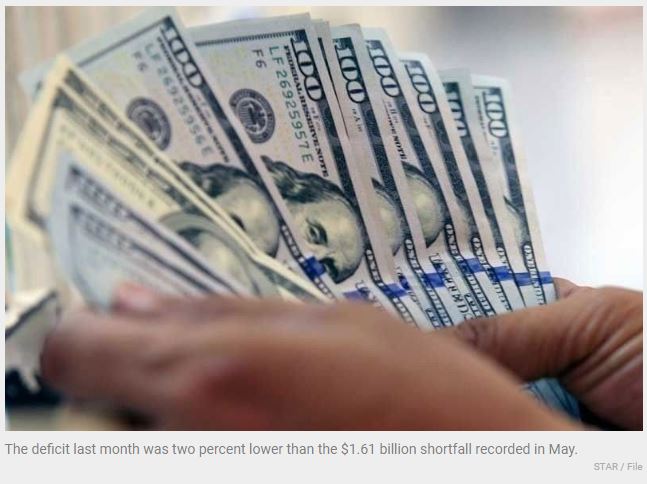Philippines: BOP deficit widens to $1.57 billion in June
MANILA, Philippines — The Philippines recorded a balance of payments (BOP) deficit of $1.57 billion in June, five times the $312 million shortfall recorded in the same month last year, according to the Bangko Sentral ng Pilipinas (BSP).
The deficit last month was two percent lower than the $1.61 billion shortfall recorded in May.
“The BOP deficit in June 2022 reflected outflows arising mainly from the national government’s payments of its foreign currency debt obligations,” the BSP said in a statement.
The BOP is the difference in total values between payments into and out of the country over a certain period. A deficit means that more dollars flowed out to pay for the importation of more goods, services and capital than what came in from exports, remittances from overseas Filipino workers (OFWs), business process outsourcing (BPO) earnings and tourism receipts.
With the huge back-to-back shortfalls in May and June, the country’s cumulative BOP deficit swelled by 60 percent to $3.1 billion in the first half from $1.94 billion in the same period last year.
“Based on preliminary data, this cumulative BOP deficit reflected the widening trade in goods deficit,” the central bank said.
Latest data from the Philippine Statistics Authority (PSA) showed that the country booked an all-time-high trade deficit of $5.68 billion in May, 78.5 percent wider than the $3.18 billion shortfall recorded in the same month last year.
Exports rose by 6.2 percent to $6.31 billion from $5.94 billion, while imports jumped by 31.4 percent to $11.99 billion from $9.12 billion.
This translated to a 70.4 percent jump in the trade deficit to $24.92 billion from January to May compared to $14.62 billion in the same period last year.
In the first five months of the year, exports went up by 8.4 percent to $31.87 billion from last year’s $29.4 billion, while imports surged by 29 percent to $56.79 billion from $44.02 billion.
Michael Ricafort, chief economist at Rizal Commercial Banking Corp., said the wider BOP deficit was partly due to near-record trade deficits as net imports have been bloated by elevated prices of imported oil and other imported commodities largely attributed to Russia’s invasion of Ukraine, net payment of foreign debts, increased volatility, and some sell-off in the global financial markets amid more hawkish US Federal Reserve signal.
The shortfall was offset by continued growth in the country’s structural dollar inflows such as OFW remittances, exports, BPO revenues, foreign investments, foreign tourism revenues and earnings of Philippine offshore gaming operators, among others.
For the coming months, Ricafort said the continued Russian-Ukraine war could still lead to elevated imports of oil and other commodities that could still lead to near record high trade deficits/net imports, thereby partly leading to weaker peso dollar exchange rate as seen in recent months.
“For the coming months, continued growth in the country’s structural US dollar inflows such as OFW remittances, BPO revenues, foreign direct investments, foreign tourism receipts, POGO revenues, among others would offset relatively wider trade deficits and some volatility in the global financial markets that could entail foreign portfolio investment outflows, (serving) as important catalysts for the BOP and gross international reserves data,” Ricafort said.
Ricafort said that more foreign direct investments into the country would also add to the country’s BOP and GIR.
The BSP said the country’s foreign exchange buffer declined to $100.9 billion as of end-June from $103.6 billion as of end-May. The figure is equivalent to 8.4 months’ worth of imports of goods and payments of services and primary income.
The GIR level is also about 7.1 times the country’s short-term external debt based on original maturity and 4.5 times based on residual maturity.
Source: https://www.philstar.com/business/2022/07/21/2196818/bop-deficit-widens-157-billion-june


 English
English




